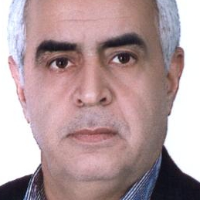Identifying routes with walkability potential in Mashhad Metropolisusing SDA method and new urbanism approach
Walking is one of the most basic methods of transportation in cities. Before the Industrial Revolution, pattern of movements within cities was based on a human scale. But with the onset of Industrial Revolution and the subsequent dominance of modernist thought, the role and importance of pedestrian zones diminished. Due to the unsatisfactory situation of modern urban planning and its failure, the increased importance given to human development and environmental issues resulted in the introduction of New Urbanism approach. New Urbanism is a response to modernism and the negative effects of suburban expansionin Europe and North America after World War II. In recent years, there have been widespread reactions against the use of motorized vehiclesseeking to revive the issue of increasing walkabilityof cities. With a population of 3057679,Mashhad annually receives 30 million pilgrims and tourists due to the presence of holy shrine of Imam Reza (Peace be Upon Him), which sometimes makes the movement of pedestrians especially around the holy Razavishrine difficult. Furthermore, the holy Razavishrine is located in the central part of the city (Central Business District-CBD) surrounded by a worn-out urban texture and a network of organic passages and thus needs paths with walkability capability. Therefore, the present study intends to identify walkable and human-centered routesin Mashhad using the New Urbanism approach.
The present study takes advantage of a descriptive-analytic survey methodology. 32 quantitative and qualitative pedestrian related indices are investigated and 400 questionnairesaredistributedin Mashhad. ArcGIS software is used to analyze the collected data. The study area is Mashhad with an area of around 35187 hectares, a population of 3057679, and a population density of 87 per hectare.
Investigating respondents’ age group indicates that 5% of respondents are in the 15-24 year age group, 17% in the age group of 25-34 years, 9% in the age group of 35-44 years, 15.75% in the age group of 45-54 years, 22% in the age group of 55-64 years and 31.25% in the age group of 65 years and more. 32% of the respondents are men and 68% are women.Surveys show that pedestrians in the western half of Mashhad are more energetic. Public participation is higher in informal settlements of Mashhad. Police records show that crime rates are higher in the suburbs of Mashhad. Regarding hiking culture, the findings show that districts number 1, 8, 9 and 11 ranked highest in the studied indices. The patterns and spatial trends of activities and population attraction centers establishmentin Mashhad show that due to the presence of holy Razavi shrine, most of these activities are located in the central part of the city (CBD), which has the highest potential to attract the population. In fact, the CBD and western areas of Mashhad have the highest economic potential to attract popular activities in Mashhad and thus, the highest number of air pollution sources. The central part of the city (CBD) and west of Mashhad have the highest sources of air pollution. Moreover, the central part of the city (CBD) and the western parts of Mashhad show the highest degree of interconnection in their urban pathways and thus, are more capable of facilitating movement within the city. Per capita green space of Mashhad is 14.26 m2.District number 7 with an area of 2736894 m2 (22.4%) have the mostand Samendistrict with an area of 44736 m2 (0.36%) have the least green space.
Based on 10 principles of New Urbanism, 32 quantitative and qualitative pedestrian related indices were extracted, identifying the paths that canbe used as routesfor pedestrians. For this purpose, 400 questionnaires were distributedin districts of Mashhad. Quantitative and qualitative data were then converted to location-based data and used for spatial analysis (SDA). Finally, combining location-based data, pedestrian routes were identified in Mashhad. Results indicate that based on the New Urbanism indices,district number 8 and Thamenare the first priority, district number11 is the second priority and district number2 is the third priority for pedestrian routes. Kohsangi, Imam Reza (AS) and Moallem-Imamatstreets were also identified as the best pedestrian routes in Mashhad.
- حق عضویت دریافتی صرف حمایت از نشریات عضو و نگهداری، تکمیل و توسعه مگیران میشود.
- پرداخت حق اشتراک و دانلود مقالات اجازه بازنشر آن در سایر رسانههای چاپی و دیجیتال را به کاربر نمیدهد.


